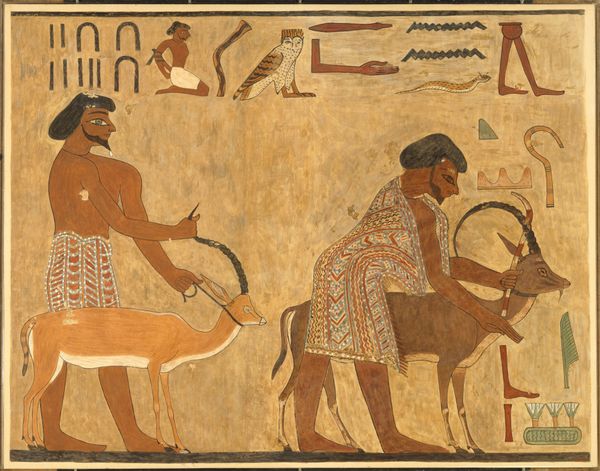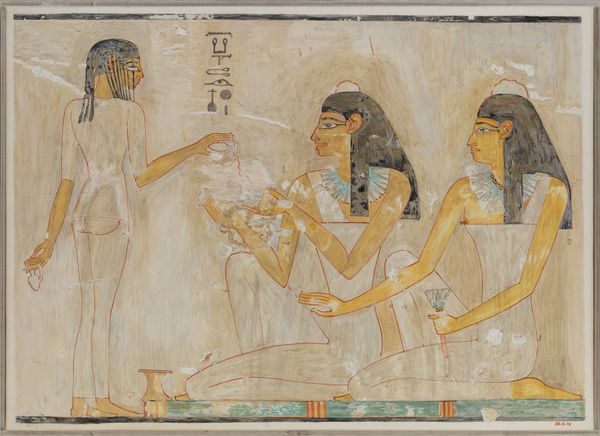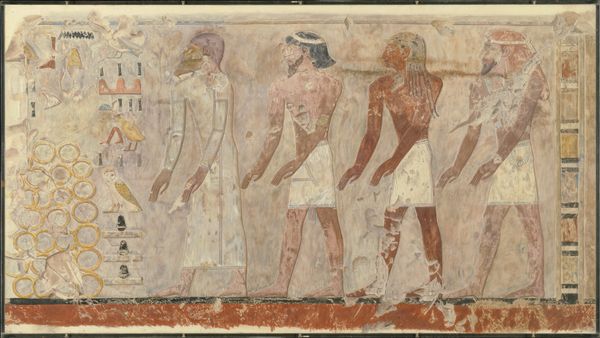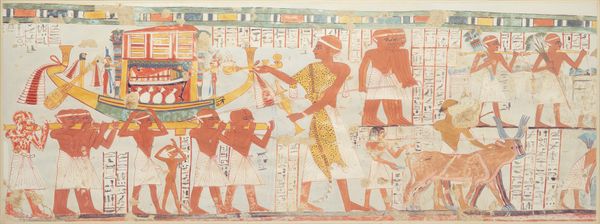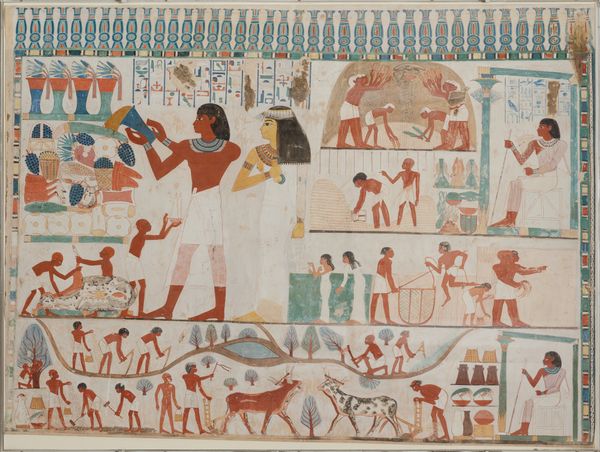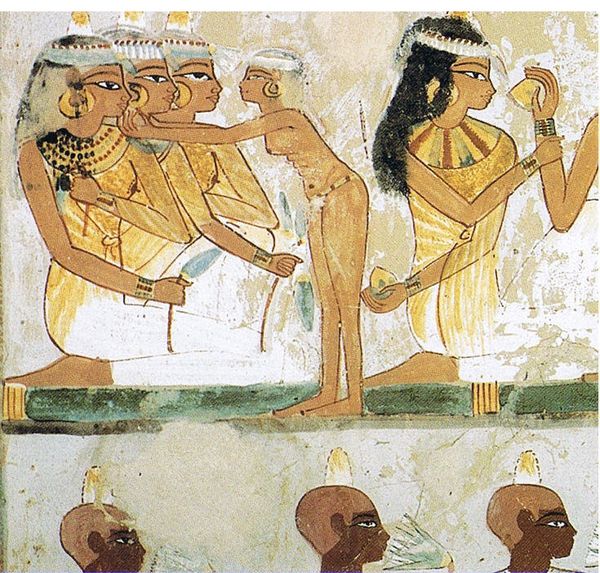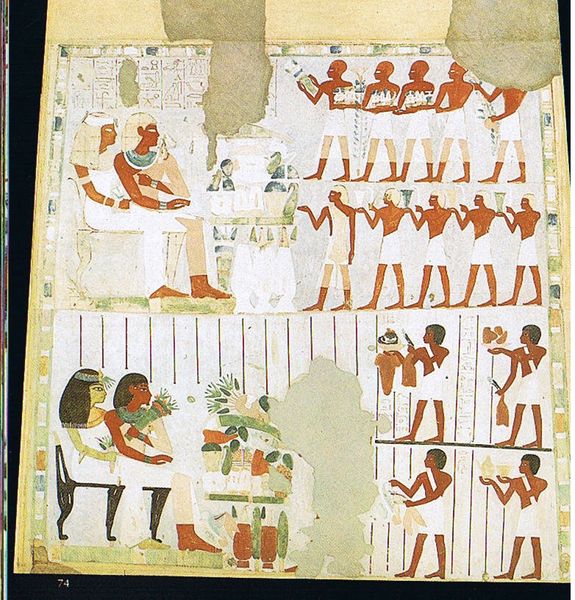
painting, fresco
#
portrait
#
water colours
#
narrative-art
#
painting
#
ancient-egyptian-art
#
figuration
#
fresco
#
egypt
#
ancient-mediterranean
#
men
#
genre-painting
#
history-painting
#
watercolor
Dimensions: facsimile: h. 66.5 cm (26 3/16 in); w. 103.5 cm (40 3/4 in) Scale 1:1 framed: h. 69.9 cm (27 1/2 in); w. 106.2 cm (41 13/16 in)
Copyright: Public Domain
Norman de Garis Davies created this watercolor facsimile of "Weavers, Tomb of Khnumhotep," an Ancient Egyptian painting. This scene gives us insight into the labor practices of the time, and the gendered division of labor. Weaving was a vital industry in Ancient Egypt, providing textiles for clothing, household goods, and trade, and this image emphasizes the labor invested in the trade. The tomb paintings, in which this scene was found, generally served as a means of ensuring the deceased’s comfort and status in the afterlife, suggesting the importance of weaving to their idea of status. The textile industry, even then, underpinned cultural values. As art historians, we need to remember that this is a later, modern copy of an original work. Davies made it as part of his work for the Metropolitan Museum of Art's Egyptian Expedition, allowing modern museum visitors to experience ancient art. Understanding that the piece we're looking at is a copy gives us insight into both ancient Egyptian culture and the priorities of early 20th-century museums.
Comments
No comments
Be the first to comment and join the conversation on the ultimate creative platform.


